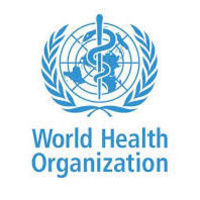The first Global guideline on surgical site infection prevention will be issued by WHO later in 2016. This work fits neatly with and builds upon the goals of two previous WHO global patient safety challenges, Clean Care is Safer Care and Safe Surgery Save Lives.
In recognition of the importance of thorough hand cleanliness, WHO is holding its third SAVE LIVES: Clean Your Hands campaign on May 5.
An on-going focus on hand hygiene improvement in all areas
Hand hygiene in health care at the right time saves lives. The WHO Hand Hygiene Improvement Toolkit is available to support anyone, in any setting, to participate in this global movement.
Considering the priority of hand hygiene improvement in a broader context, 5 May 2016 also aims to support the water, sanitation and hygiene (WASH) agenda, given that 35 percent of health-care facilities still do not have soap and water for hand hygiene, among other things. Find out more here.
WHO works with many key stakeholders to make the campaign successful every 5 May. This includes the WHO Collaborating Centre at the University Hospitals, Geneva led by Professor Didier Pittet, many national organisations, ministries of health, infection prevention societies and Private Organisations for Patient Safety (POPS).
See Also:4 in 5 Nurses Ignore Infection Prevention Guidelines
Improving hand hygiene practices in all
surgical services through the continuum of care, from surgical wards to
operating theatres, to outpatient surgical services, is the primary focus of
this year’s 5 May campaign. To this end, WHO will be promoting existing
educational tools, to integrate hand hygiene into clinical practice.
Useful products available from WHO this year will include:
- A video message from WHO to be used at your 5 May events and focused on this year’s theme – coming before the end April.
- The opportunity to join leading global expert Professor Didier Pittet’s 5 May “Webber teleclass” – you can register for it here!
- A report on the 2015 WHO global Hand Hygiene Self-Assessment Framework survey - to be released on 5 May.
- A new WHO policy brief – to be released by 5 May.
- The SAVE LIVES: Clean Your Hands newsletter, aimed at keeping everyone updated and to encourage more health facilities to sign up to the campaign if they have not already done so – can we achieve a registered health facility in every single country of the world? You can encourage people to sign up here.
To promote the campaign, there is downloadable material available for a range of social media channels.
Source: WHO
Image Credit: WHO



























